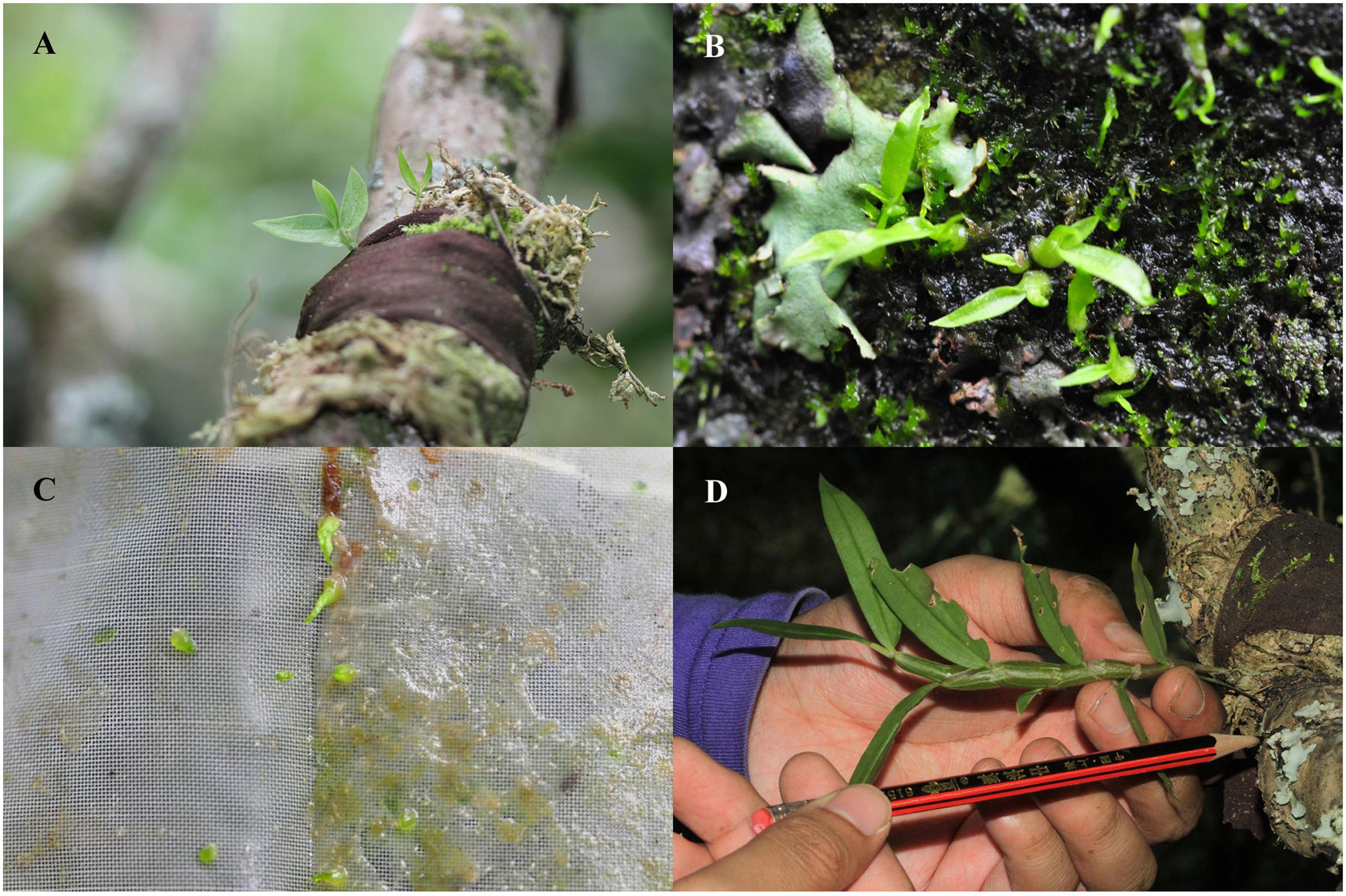Achieving a balance between biodiversity conservation and market demand for medicinal plants has become an urgent task for orchid conservationists worldwide. While many ex situ techniques have proven effective for the generation of orchid germplasm to facilitate restoration efforts, techniques that use low cost in situ methods are preferred for the maintenance and promotion of genetic diversity within remaining orchid populations.
Researchers from Xishuangbanna Tropical Botanical Garden (XTBG) proposed a novel in situ advanced restoration-friendly program for the endangered epiphytic orchid species Dendrobium devonianum (an epiphytic orchid widely distributed in the subtropical and tropical areas of SE Asia).
The researchers conducted a series of in situ symbiotic seed germination trials using conspecific fungal isolates in two traditional tea gardens in Xishuangbanna.
They tested whether the presence or absence of a fungal inoculate would influence in situ symbiotic seed germination. They asked whether seeds can germinate directly in the field and develop into artificial populations without laboratory facilities, artificial transplantation and acclimatization from ex situ condition.
To evaluate the role of humidity on in situ seed germination that would mimic moisture and light conditions in sealed petri dishes in the laboratory or on sphagnum substrate in the greenhouse, they tested a Plastic Wrap treatment for germination trials in the field. They also tested a Plastic Wrap + packet treatment.
They found that restoration-friendly cultivation of orchids through in situ symbiotic seed germination can produce a large number of orchid seedlings quickly and easily at very low cost. The advanced in situ germination techniques include a secure sowing site that promotes a warm microhabitat with high and constant humidity yet allows light penetration to promote germination.
The researchers thus determined that in situ symbiotic seed germination can be used to conserve the endangered species D. devonianum by concomitantly rebuilding populations in the species’ natural range and meeting the demand of industry for cultivated medicinal orchid materials.
The study entitled “Using in situ symbiotic seed germination to restore over-collected medicinal orchids in Southwest China” has been published in Frontiers in Plant Science.
Contact
SHAO Shicheng Ph.D
Center for Integrative Conservation, Xishuangbanna Tropical Botanical Garden, Chinese Academy of Sciences, Menglun, Xishuangbanna, Yunnan 666303, China
E-mail: shaoshicheng@xtbg.org.cn

Results of in situ symbiotic seed germination for D. devonianum in Yunnan, China.
(A) Two-month old seedlings using the Sphagnum treatment in Longpa;
(B) Seedlings formed by the Plastic Wrap treatments in Longpa 45 days after sowing;
(C) Seedlings formed by the Plastic Wrap + packet treatments in Yiwu 30 days after sowing;
(D) Twelve-month old seedlings grew to 10 cm after sowing using the Sphagnum treatment in the Longpa site, Yunnan, China.
(Images by SHAO Shicheng)

